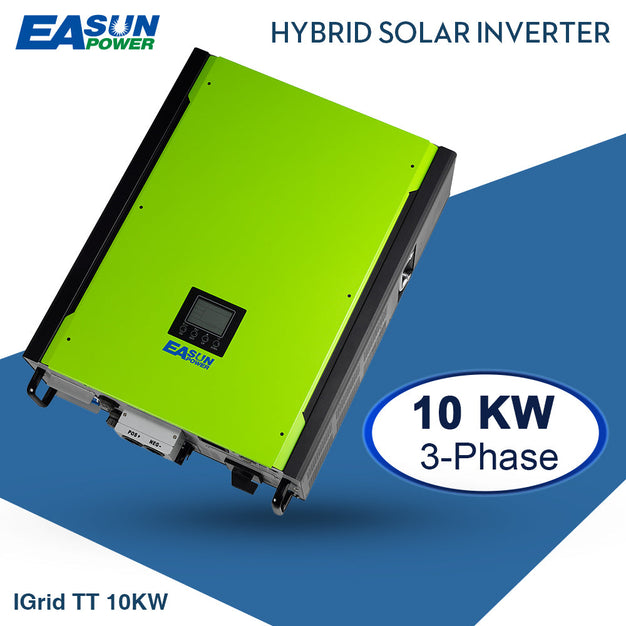Unlock the Secrets to Choosing the Perfect Inverter for Solar Energy Mastery!
As the world increasingly shifts towards sustainable energy solutions, solar energy has emerged as a leading contender in the quest for clean, renewable power. The technology has evolved significantly, making solar panels a viable option for both homeowners and businesses alike. However, to truly harness the potential of solar energy, one must understand the critical role of inverters in solar energy systems. Inverters are the unsung heroes that convert the direct current (DC) produced by solar panels into alternating current (AC) that can be used in our homes and businesses. Choosing the right inverter is essential for maximizing solar panel energy harvest and ensuring the efficiency of your solar energy system. In this article, we’ll explore the various aspects of inverters, helping you find and purchase the perfect one to enhance your solar energy experience.

Understanding Inverters and Their Functionality
An inverter is a critical component of any solar energy system, serving as the bridge between the solar panels and your electrical appliances. Solar panels generate DC electricity, which needs to be converted to AC electricity to power most home appliances. Inverters perform this vital function, allowing the energy harvested from sunlight to be utilized effectively within your home. There are several types of inverters available on the market, including string inverters, microinverters, and power optimizers. String inverters are the most common, connecting multiple panels in series and converting the collective output to AC power. On the other hand, microinverters are installed on each solar panel individually, allowing for greater efficiency, especially in shaded areas. Power optimizers can be used in tandem with string inverters to maximize the performance of each panel. Understanding these options is crucial in selecting an inverter that aligns with your specific solar energy needs.
Factors to Consider When Choosing an Inverter
When choosing an inverter, there are several critical factors to consider that can affect overall efficiency. These include inverter compatibility with your solar panels, the inverter’s capacity, and its efficiency ratings. Understanding how these aspects contribute to the performance of your solar energy system is crucial. Efficiency ratings are particularly important, as they dictate how much energy is lost during the conversion process. A higher efficiency rating means less wasted electricity, which is especially important when considering the overall energy output of your solar panels. Additionally, it’s important to consider the inverter's lifespan, as some units may require replacements more frequently than others. Overall, selecting an inverter that meets your specific needs is key to optimizing your solar energy experience.
Efficiency Ratings and What They Mean
Efficiency ratings are a fundamental aspect of inverters that can significantly impact your overall energy harvest. Typically, inverter efficiency is expressed as a percentage, representing the ratio of output power to input power. The higher the efficiency rating, the less energy is wasted during the conversion process. Most modern inverters boast efficiency ratings between 95% and 99%. This means that if your solar panels generate 1000 watts of DC power, an inverter with 98% efficiency would convert 980 watts into usable AC power. Understanding these ratings is crucial when selecting an inverter, as even a small difference in efficiency can lead to substantial energy loss over time.
Installation and Maintenance Considerations
The installation process for inverters can significantly influence their performance and longevity. It is essential to follow manufacturer guidelines closely and ensure that your inverter is installed in a location that allows for adequate ventilation and protection from the elements. A poorly installed inverter may experience overheating, leading to decreased efficiency and potential damage. Regular maintenance is also vital; keeping the inverter clean and free from debris will help maintain its performance. Additionally, periodic checks on the system’s performance through monitoring software can alert you to any potential issues, allowing for timely interventions that can prevent larger problems down the line.
Common Myths About Inverters
There are several misconceptions surrounding inverters that can lead to confusion when selecting solar energy systems. One common myth is that inverters are ineffective in cloudy weather. In reality, while solar panels may produce less energy on overcast days, inverters are designed to work efficiently under varying conditions, ensuring that any available sunlight is converted into energy. Another myth is that inverters have a short lifespan and need frequent replacements. While it’s true that the lifespan of an inverter can be shorter than that of solar panels, many modern inverters come with warranties of 10 to 25 years, depending on the model. Understanding these myths can empower you to make informed decisions regarding your solar energy system.
Choosing the Right Inverter: Key Takeaways
Choosing the right inverter is a crucial step in maximizing your solar energy capture and ensuring the efficiency of your solar energy system. By understanding the various types of inverters, their functionalities, and the key factors to consider—such as efficiency ratings and installation practices—you can make a well-informed decision that suits your specific energy needs. Remember to debunk common myths and focus on your unique requirements when researching inverters. With the right inverter in place, you can enjoy the full benefits of solar energy, paving the way for a sustainable future.



